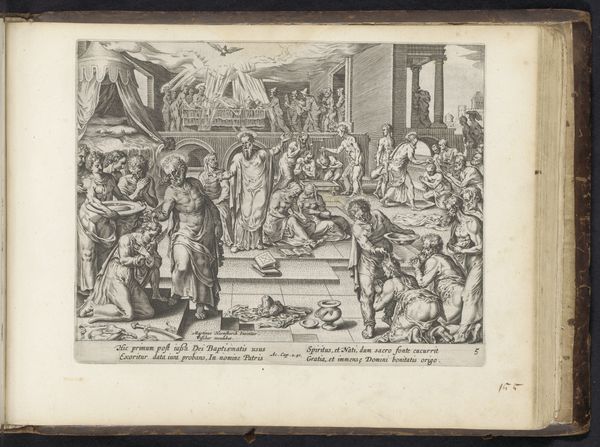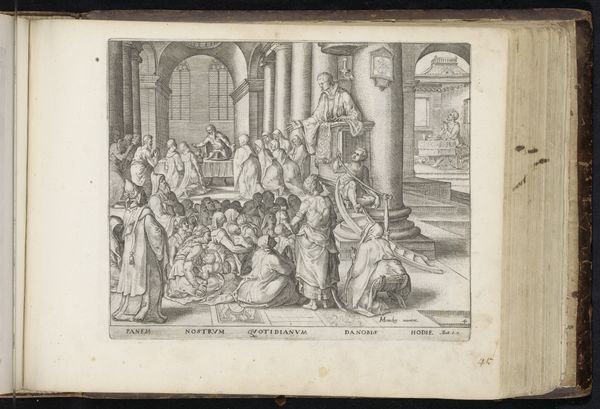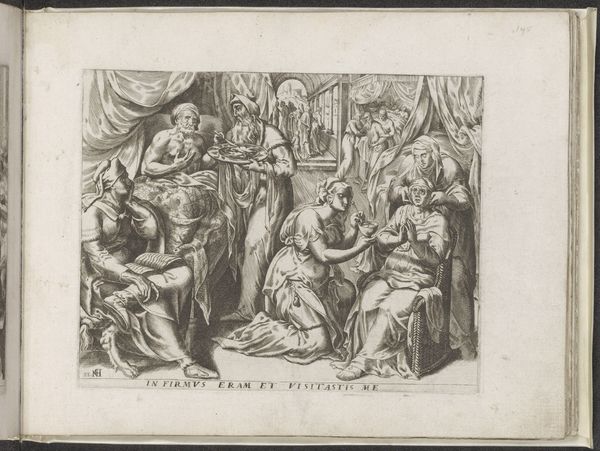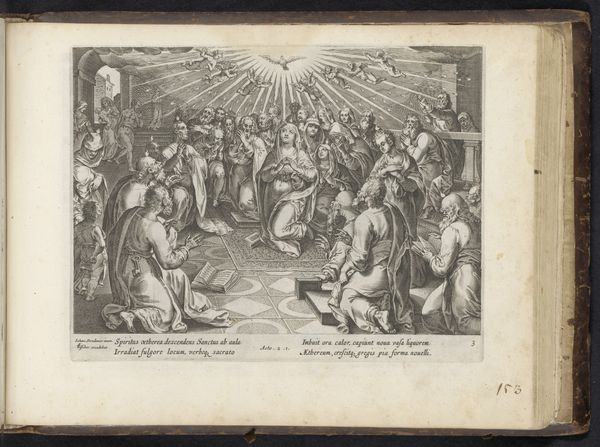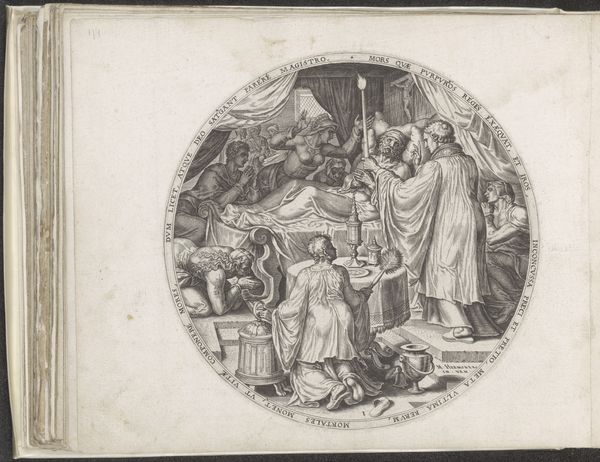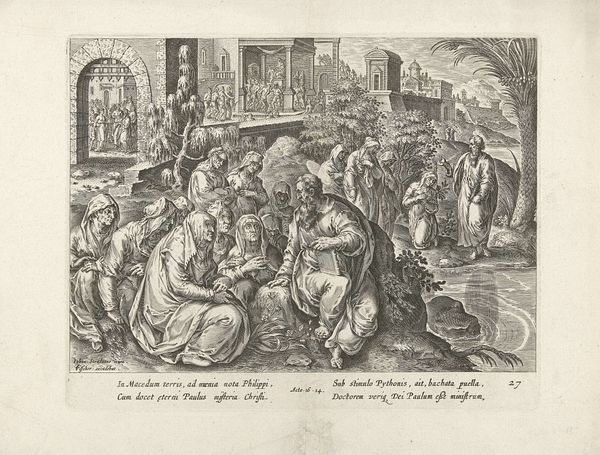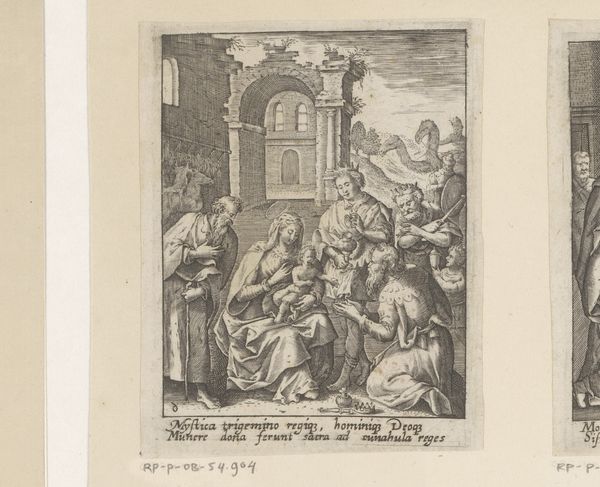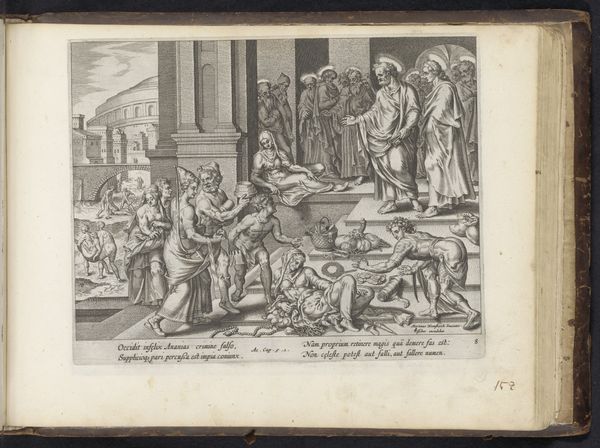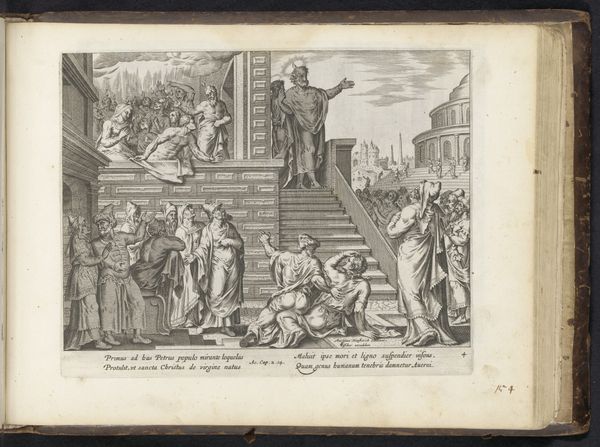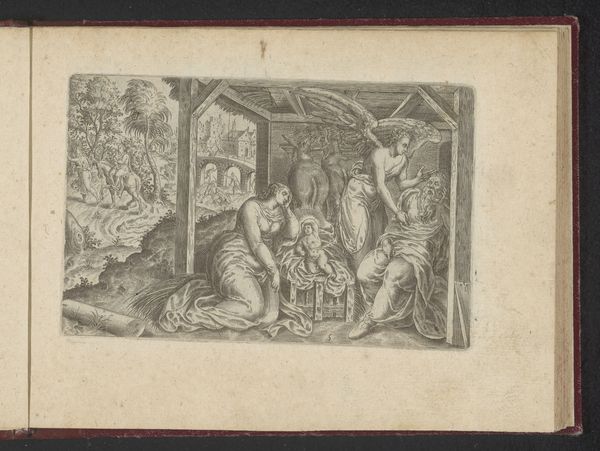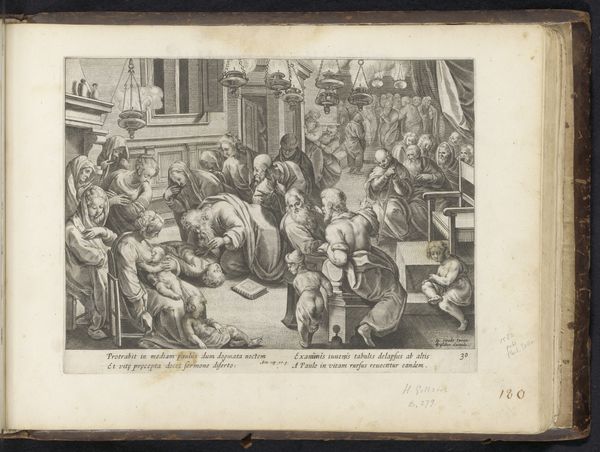
print, engraving
#
narrative-art
#
baroque
# print
#
figuration
#
coloured pencil
#
line
#
history-painting
#
engraving
Dimensions: height 211 mm, width 264 mm
Copyright: Rijks Museum: Open Domain
Curator: Looking at this print, I’m immediately struck by its meticulous detail, even though the tones are limited to the grayscale, it gives me a quiet, reverent mood. The small size, relative to the scale of the depicted scene, only seems to heighten the drama. Editor: Indeed. What we have here is an engraving dating from sometime between 1643 and 1646. The Rijksmuseum houses this particular impression of "Paulus spreekt met de vrouwen in Filippi" - or "Paul speaking with the women of Philippi". It’s unsigned, listed as "Anonymous." Let’s dive deeper than the aesthetics here. This scene, a key narrative moment, speaks volumes about gendered religious practice and access in the early Christian era. Curator: I'm interested in how the engraver has used line work. You can almost trace the various groups participating in the scene. Look at the tools of printmaking in the seventeenth century! Consider that they allowed for an unprecedented reproduction and dissemination of religious ideology. It brings forward issues around accessibility of the scripture itself. Editor: Precisely! Women, depicted as the primary audience here, held a complex relationship with scripture, often mediated through male interpretation. How fascinating it is that, centuries later, an anonymous craftsperson is continuing that line of interpretation by way of another highly mediated artwork. Further, the location – Philippi – was a Roman colony, so it is vital to consider these themes of imperialism within this scene. Curator: It’s a useful consideration for today. When we consider the context in which the print was manufactured, for instance. This could tell us so much about consumption trends. The relatively skilled engraver also produced prints as propaganda. We shouldn’t assume these women were passive receptacles. Editor: Certainly not, we shouldn’t! Even within patriarchal structures, marginalized voices find ways of resistance, negotiation, and, crucially, community. It’s there if you peer between those stark, dark lines. It urges me to contemplate how this historical moment impacts contemporary debates regarding female roles and gender justice. Curator: Examining those very production means does let us better interpret the themes that endure to this day. Editor: Ultimately, the enduring appeal lies in its subtle layering, its testament to intersectional understanding of history’s layered meanings.
Comments
No comments
Be the first to comment and join the conversation on the ultimate creative platform.


